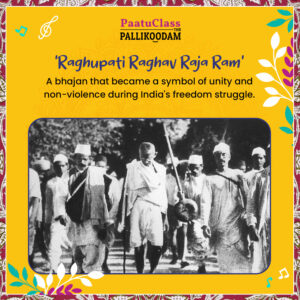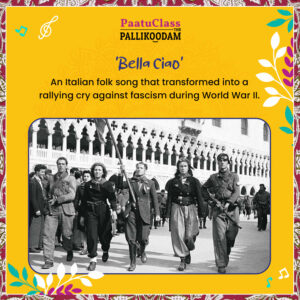Tunes of Transformation : Music as a Catalyst for Social Change
Music has the power to transcend the barriers of language and culture, becoming a music for social change, a catalyst for change, and a voice for the voiceless. In India, a land of diverse languages and cultures, singing has been a potent force for social transformation. From the songs of the freedom struggle to the anthems of modern movements, the Indian subcontinent has a rich history of vocal music as a tool for social change.

The Power of Lyrics in a Song
In India, the power of a song for social change is not just in its melody but in its lyrics. The words of a song can capture the zeitgeist, reflect societal issues, and resonate with the masses. The melodies, often based on ragas, carry these words into the hearts of people, creating a sense of unity and purpose. The emotional weight carried by a singer’s voice can inspire, comfort, and mobilise.
Historical Examples
The Indian struggle for independence from British rule is replete with examples of singing as a form of protest and unity. The bhajans of Mahatma Gandhi, such as “Raghupati Raghav Raja Ram,” were not just devotional songs; they were symbols of music and social change. They brought together people from different religions and walks of life, fostering a sense of solidarity against colonial oppression.

Internationally, during the Civil Rights Movement in the United States, songs like “We Shall Overcome” became anthems that united people in their fight against racial segregation and injustice, This song, too, found its echoes in Indian movements, symbolising the universal struggle for rights and justice.
“Bella Ciao,” an Italian folk song that became an anthem for the anti-fascist resistance, has been a powerful tool that united people in their fight against oppression and injustice.

Music as a Tool for Awareness and Education
In India, singing has been a powerful tool for raising awareness about social issues and educating the masses. The government and various NGOs have harnessed the power of songs to spread important messages about health, sanitation, and education, especially in rural areas where literacy rates may be lower, but the tradition of oral storytelling and singing remains strong.
One notable example is the song “Mile Sur Mera Tumhara,” which translates to “When My Tune Merges with Yours.” This song, released in 1988, became a symbol of national integration and unity in diversity. It featured prominent Indian personalities from various fields and regions, each singing in their own language, yet united in the same melody. The song’s message was clear: despite the vast diversity of languages and cultures in India, there is a common thread that binds everyone together.
Another impactful campaign is “Beti Bachao, Beti Padhao,” which means “Save the Daughter, Educate the Daughter.” Launched by the Indian government, this campaign used singing and music as a medium to advocate for the rights and education of girls. It aimed to address issues like gender-based discrimination and the declining child sex ratio in India. Songs created for this campaign highlighted the importance of valuing and educating girls, thereby influencing public opinion and policy towards a more gender-inclusive approach.”
Music Festivals Supporting Social Causes
In recent years, music festivals in India have begun to align themselves with social and environmental causes, demonstrating the power of music beyond entertainment. A notable example is the Mahindra Independence Rock 2022. This festival not only celebrated the spirit of rock music but also emphasised the importance of environmental conservation and social responsibility. The event showcased how music can be a powerful tool for raising awareness and support for crucial issues facing society.
The Power of Chants in Social Movements
Beyond music, simple yet powerful chants have also played a significant role in social movements. A chant, often just a few words or a sentence repeated rhythmically, can be a powerful tool for unity and mobilisation. For example, the “Save Aarey” movement, which aimed to protect the Aarey forest in Mumbai from deforestation, saw the use of catchy and compelling chants during protests and gatherings. These chants, while not traditional songs, carried the spirit and determination of the participants, demonstrating that social change can be driven by any form of vocal expression that unites and inspires people.
Challenges and Criticisms
Despite its power, singing for social change in India is not without its challenges and criticisms. Some argue that these songs can be overly simplistic and fail to capture the complexity of issues. Others point out that while a song can bring attention to a cause, it does not always lead to concrete action or policy change.
Conclusion
The transformative power of singing in India is undeniable. From the bhajans of the freedom struggle to the viral anthems of today, singing has shaped and been shaped by the social and political currents of the nation. As we listen to the tunes of transformation, we are reminded of the enduring power of the human voice to inspire change and unite people across divides.
As we move forward, let us remember the songs that have been sung and the voices that have been raised. Let us continue to sing for a better tomorrow, for a world where justice and peace are not just the subjects of lyrics but a reality for all.





